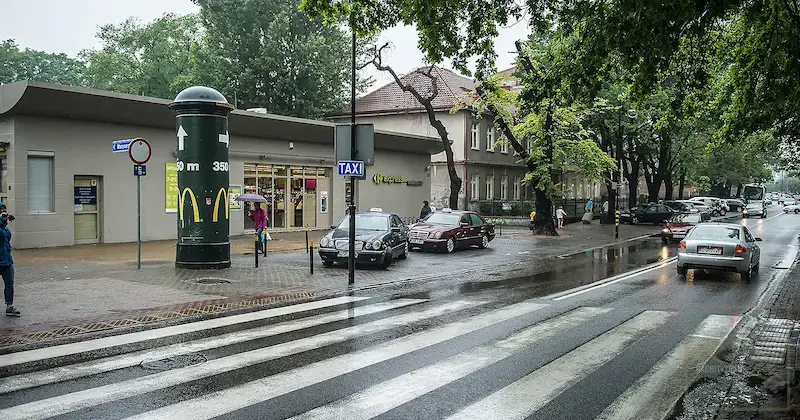Initial taxi fare - fee for the first kilometer
- Damian Brzeski

- Aug 17
- 3 min read
Why does a taxi charge from the first second before it even starts moving, and then double the fare? The initial fee, colloquially known as the "door slam" fee, is intriguing and sometimes controversial.
It's meant to compensate drivers for waiting time and readiness for the ride, but it varies greatly in different cities—from Warsaw to Tokyo. Find out how much you really pay just to start a ride and why this topic can spark heated debates in small towns.

What is an upfront fee in a taxi and why does it even exist?
The initial taxi fare —also known as the "door slam" fee —is the fixed amount you see on the taximeter from the first second of the ride. It's charged when the meter is turned on and covers the first kilometer of the ride.
Why is there such a fee in taxis at all?
In theory, it's meant to compensate the driver for their willingness to perform the ride and the time it takes to reach the passenger. When you order a taxi, the driver often has to cover a distance that's comparable to, or sometimes even longer than, the route you'll take as a passenger.
If you get in at a rest stop, it doesn't mean the driver "did nothing." Sometimes they'll be there for a few minutes, or even an hour or two, waiting for a customer. So, the initial fee is theoretically intended to cover some of these costs.
In practice?
In most Polish cities, this fee is approximately twice the price per kilometer . It doesn't actually cover the entire time and fuel consumed by waiting or commuting, but it serves as a minimum fee . It ensures that even a very short trip won't be completely unprofitable for the driver.
How does it work in Poland and around the world?
Poland – The initial fee is typically 5–10 PLN in large cities. It covers the first kilometer or part of it. After that, the taximeter switches to the standard kilometer and time rate.
Berlin – Start is €4.30, then €2.80/km. The initial amount covers the first section of the route.
New York – Flag drop is $3.00, plus city surcharges and rates for subsequent route segments or stopover time.
Tokyo – About 500 yen, including the first kilometer with the tow bar. After that, the meter counts very small distances, but more frequently.
London – Minimum of around £2, which covers the first few hundred metres or a few dozen seconds of driving.
In many countries, additional charges apply for travel to the customer , even within the city, and a number of other fees (e.g. for luggage, travel at night or travel on holidays).
What about initial fees in small towns?
This is where things get interesting — and a bit controversial.
In small municipalities, taxi drivers are often licensed for only one area. If a customer is calling from a town several kilometers away, the driver should theoretically only turn on the meter once the passenger has boarded.
In practice, however, sometimes:
agrees to pay extra for travel,
turns on the counter already at the border of its licensing zone,
or (unfortunately) turns it on earlier, which is unverifiable for the passenger and raises doubts about honesty.
Such situations are only legal if the journey begins or ends in the municipality for which the driver is licensed. However, the method of calculating the travel fee can be opaque and irritating for the customer.
If you have any doubts, arrange a fixed price!
For out-of-town trips , it's easiest to agree on a price in advance . This way:
the passenger knows how much he will pay,
the driver includes time, fuel and a possible empty return in the price,
both sides avoid discussing when the meter was turned on.
The initial fee is not a “fee for air” – it is a form of minimum payment for your time, readiness and start of the course.
In theory, it is supposed to compensate the driver for preparing for driving, in practice it is rather a compromise between costs and an acceptable starting amount for the passenger.
And in small towns, honesty and transparency of arrangements are key to avoiding misunderstandings.
































































Comments